Shapeshifting Cityscapes
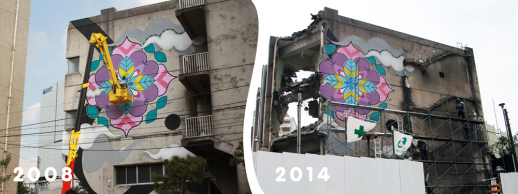
Does any street art or graffiti in Tokyo last for longer than a decade? Spray work usually gets a raw deal in the capital, with murals, shop fronts and wall pieces alike struggling to survive in a city where urban renewal starts almost as soon as development finishes. As previously covered on TABlog, sticker art has become the medium of choice on the Tokyo streets these days. But there still remains a subculture of artists, writers and taggers who refuse to give up their spray cans, against all the odds.
The issue of definition is a complicated one; bombers don’t want to be called graffiti artists, some graffiti writers don’t want to be thought of as street artists and some muralists don’t want to be associated with the graffiti scene at all.
Whatever label you use, it has certainly become a lot more difficult for them to sharpen their skills out there on the streets. Back in 2004–when I visited Japan for the first time–anyone could paint legally on the 3 kilometer-long wall in Sakuragichō, graffiti writers could hang out together at Daizu Jiken in Nakameguro, or skate and paint at the Ghetto in Shin-Okubo. All of these spots have sadly gone under in the last 10 years, with seemingly nowhere similar springing up to take their place.
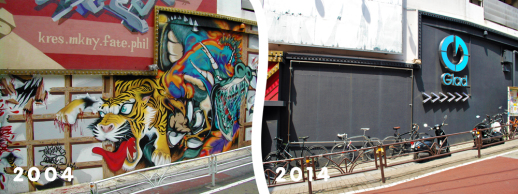
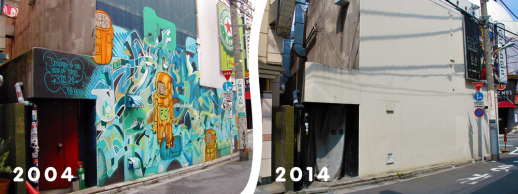
It would be very easy to come to the conclusion that the Kantō region is gradually losing its colour. Graffiti writer imaone doesn’t seem to think so. “I think Sakuragichō hasn’t had an effect on the current graffiti writers or artists who have gone on to become graffiti writers,” imaone recently commented. “This is because they’ve already seen, painted and experienced it back in the day, and it was a long time ago. Now they’ve already managed to find their own way. It’s unfortunate that there isn’t a place like that any more for teenagers and people in their twenties; a place which has rules but also a certain kind of toughness as well.”
The photos I took in 2004 show some of the other changes that have taken place on the walls of Shibuya and Daikanyama over the last decade.
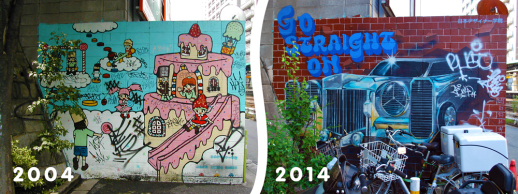
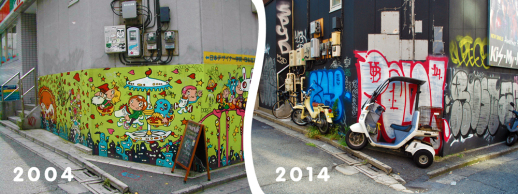
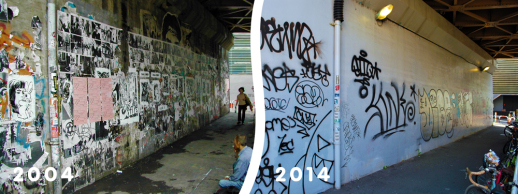
Tokyo has had a pretty random approach to public murals in the last few decades, and it has a taken a while for the mediums of street art and graffiti to become respectable. It’s true that graffiti’s stylistically heavy approach often makes it look dated a few years down the line; but at this point in time there are numerous street artists whose work is good enough to be a permanent part of the cityscape.
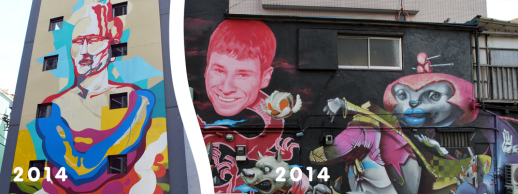
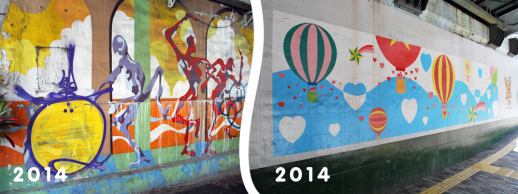
Tracking down new murals and graffiti hotspots is one of my favourite ways to explore the city. Blogs like Graffiti Haven are a great resource for finding the corners the city where the work is scattered. Some of the best pieces end up in a book or a magazine, but nothing beats seeing an original work up close and in person. Catch them while you can today, as the city may be shapeshifting again tomorrow.
Paul Heaton
Paul Heaton



